The Becker Mexico Cassette is the radio most often associated with Mercedes-Benz cars of the 1970s. At least in Australia, it would progressively become standard in the various Mercedes-Benz models until the end of 1978. There were a few different varieties of this radio over the years, the instructions below are from an 370 M series radio, originally fitted to my 1977 450SLC. For 1978 in Australia, the Mexico Cassette moved to the 485 model for that year only.
The Mexico Cassette was always standard on the 450 models, but optional on other cars in the early 70s. At least by the introduction of the W123, it would become standard across the range. While today it seems like a simple device, it was a very high end radio in its day. Not only the integrated Cassette player, but the ‘wunderbar’ auto tune mechanism were not commonly found on cheaper radios.
The Becker Mexico Cassette is two piece radio with a 2x7W amplifier. At least in Australia, it was superseded by the Becker Mexico Cassette 374 model.
Becker Mexico Cassette 370 Buttons
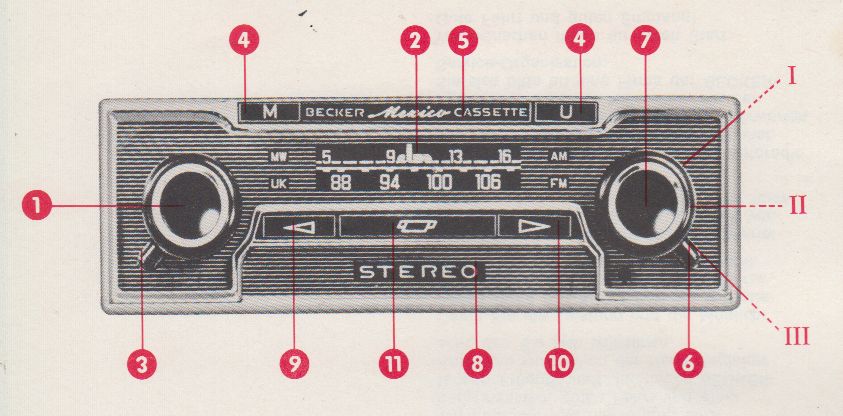
- On-off switch, volume control
- Pilot lamp
- Tone control knob
- Wave-band push buttons
- Automatic push button
- Sensitivity control
- Manual tuning knob
- Cartridge pit of radio
- Fast winding of tape
- Fast rewinding of tape
- Ejector button
Radio Reception
Switch on radio:
The radio is switched on by turning the left-hand rotary knob (1) to the right. Then the green operational pilot lamp (2) flashes up. The desired sound volume is regulated by turning the same rotary knob (1) further to the right.
Tone:
By means of the left-land lever (3) the tone can be regulated according to personal requirements.
Station Tuning:
The station tuning can be done in two different ways. The radio “Mexico-Cassette” offers the possibility to tune in a station either automatically by means of the station finder, or by hand.
Automatic Station Tuning:
After having switched on the radio, the desired wave band is chosen by depressing the corresponding push button (4).
The letters on the push buttons indicate M = medium wave, U = ultrashort wave. When the automatic push button (5) is depressed, the dial pointer runs along the dial from left to right and stops when it reaches a station worth receiving. Depress the automatic push button again, and the pointer will run to the next available station. After the pointer has reached the end of the dial, it will jump back to the left, resuming station finding by moving along the dial. The number of the stations to be tuned in automatically can be fixed by the sensitivity control (6), a three-state switch. The different switch positions indicate:
- Sensitive, i.e. pointer stops at many stations, also at faint-ones,
- Medium, i.e. pointer stops at powerful and semi-powerful stations,
- Insensitive, i.e. pointer stops at powerful stations only.
Manual station tuning:
After having determined the desired wave band by depressing a wave-band push button (4), the station can be turned in manually by turning the manual tuning knob (7).
Tape Reproduction
Playing of Cassettes:
Insert cassette, with full tape at right-hand side, into cartridge pit of radio and press until touch. While cassette is inserted, change over from radio reception to tape operation takes place automatically.
Both volume and tone are regulated in the same way as for radio reception, by turning volume control knob (1) and tone control knob (3).
When tape reproduction is completed at one side of the cassette, the cassette is ejected from the cartridge pit the moment the end of the tape is reached. At the same time the tuning unit automatically changes over to radio reception. For playing the other side of the tape, the cassette is turned round and reinserted into the cartridge pit of the radio.
Ejection of cassette by hand operation:
If tape reproduction is to be interrupted before tape is finished, ejector button (11) must be pressed. This will change over the tuning unit to radio reception whilst the cassette is ejected from the cartridge pit.
Fast winding and rewinding of tape:
By pressing the fast winding button (9) or the fast rewinding button (10) the tape is quickly wound or rewound, so to permit the selection of other music. A short pressing of the antagonistic button stops the winding operation.
We recommend:
use on trade mark cassettes C60 and C90. If it should be the case that once the tape entangles rewind the tape loop into the cassette by turning one of the two spools with a suitable object (pencil).
Care and maintenance:
Under normal conditions the radio unit requires no special maintenance. From time to time the head should be cleaned with the aid of a cleaning cassette, because after any longer period of operation deposits are bound to settle there. After approx. 1,000 operating hours the unit should be inspected by and expert and cleaned thoroughly.
Connection of supplementary apparatus:
The “Mexico-Cassette” car radio provides for the connection of an automatic antenna or a short wave adaptor as supplementary apparatus.


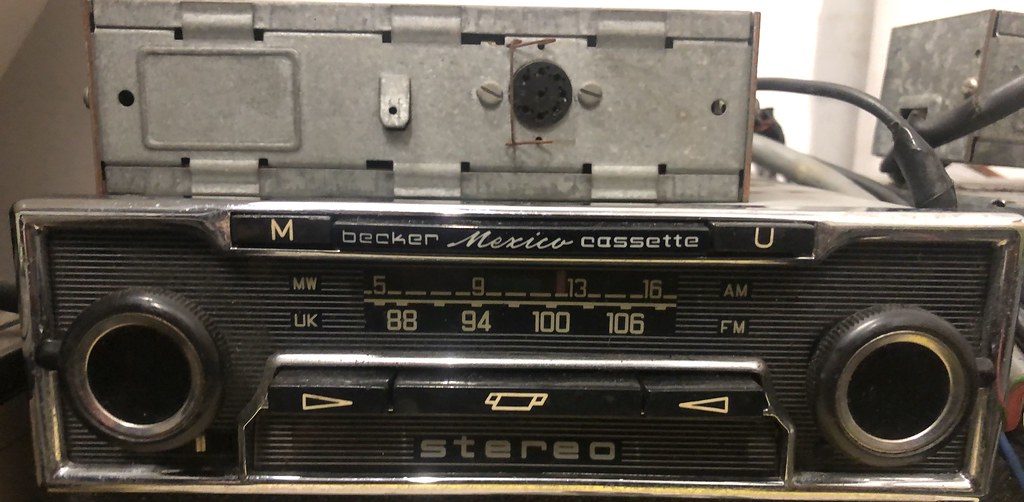
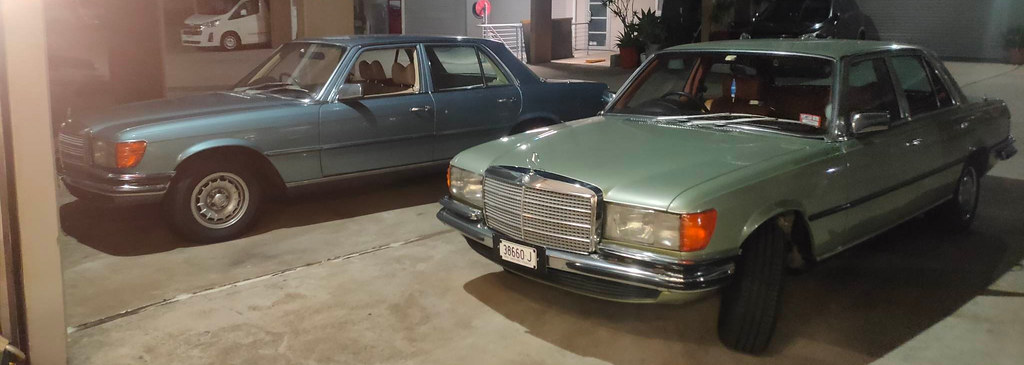
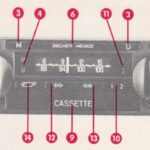
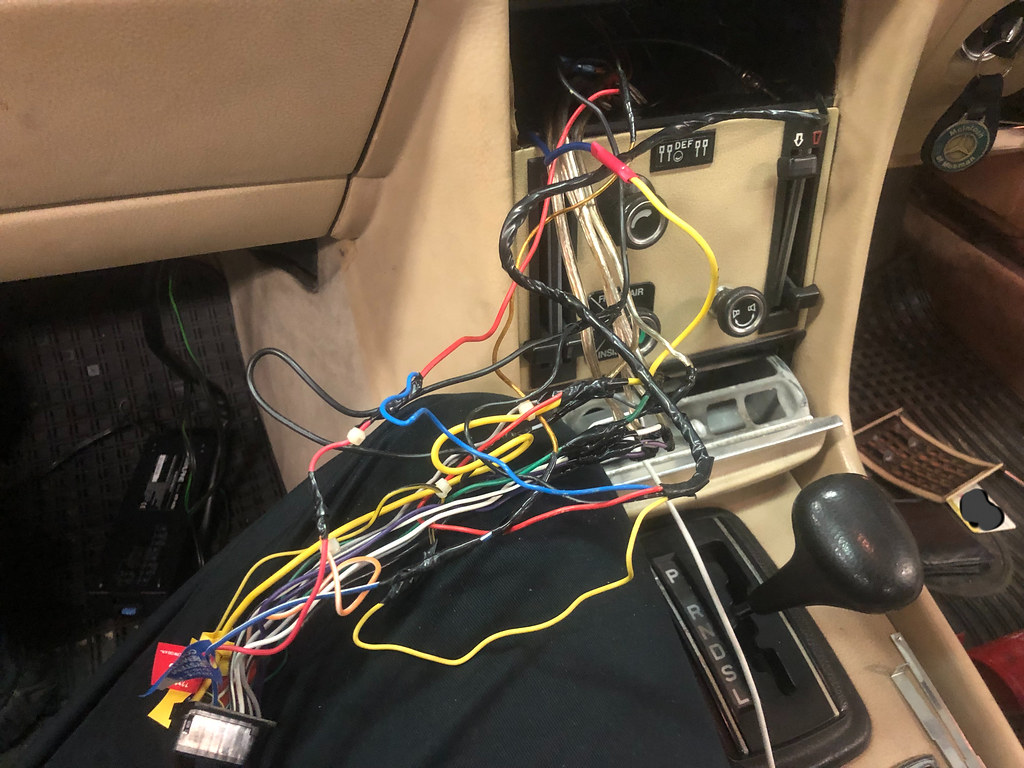

Leave a Reply